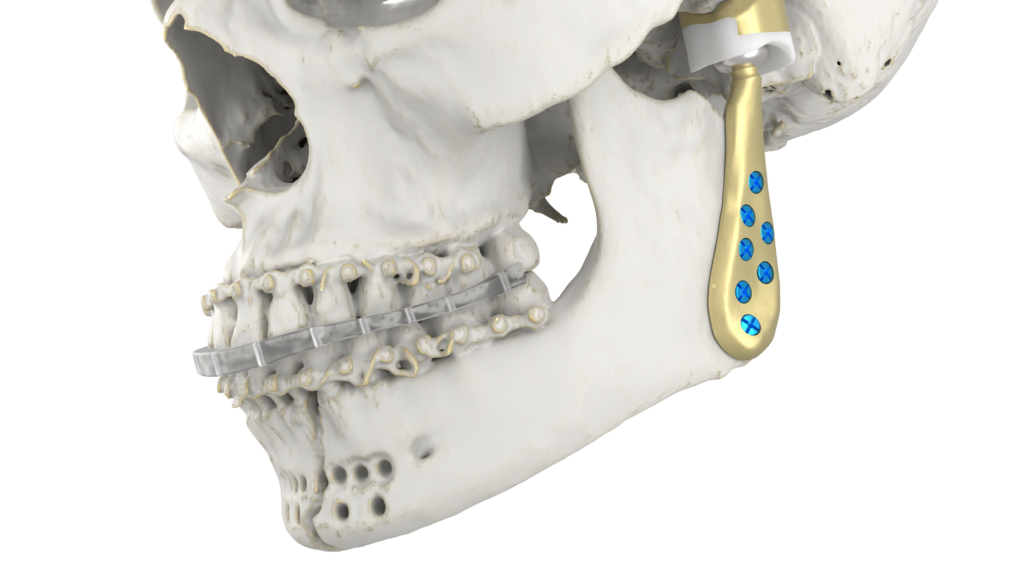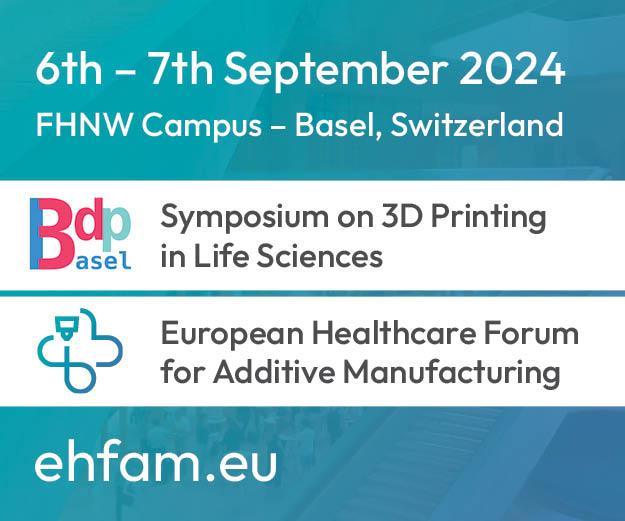Imagine the discomfort of experiencing pain every time you eat, or the constant radiating pain in your head due to this condition—it would be incredibly distressing. One reason why joint restoration (arthroplasty) in this area is not a very common procedure, with around 500 operations annually in the U.S., is that it is typically reserved for individuals with tumors and trauma to the area that cannot be addressed through other treatments. The reasons for these procedures, along with the associated Temporomandibular Disorders (TMD), are diverse, potentially stemming from as many as 30 different causes. These conditions can lead to a range of symptoms, including headaches, joint pain, ringing in the ears, and difficulties with chewing. Although surgeries of this kind are uncommon and usually reserved for the most severe cases, it is estimated that around 11 million people in the US may experience pain in these joints at some point.
To facilitate an increase in these procedures, Materialise (Nasdaq: MTLS) has introduced an end-to-end, fully personalized temporomandibular joint (TMJ) total arthroplasty system, designed to digitize the entire process. This innovative system is designed for surgeries where implants replace all or part of the upper part of the jaw that enables yawning, chewing, and mouth opening. The TMJ serves as both a cushion and guide, facilitating safe and comfortable jaw movement by aiding in both gliding and rotation. It is often referred to as the “most complicated joint in the body.”
“Our TMJ Total Arthroplasty System provides a completely personalized solution. It allows the seamless transfer of the virtual preoperative surgical plan to the operation room, enabling the functional reconstruction of the temporomandibular joint. This comprehensive solution offers clinicians full support for this complex procedure. It truly facilitates personalized treatment by providing a complete system including virtual planning software and clinical engineering support, as well as surgical guides, screws, and the implant itself,” said Maarten Zandbergen, Market Manager CMF at Materialise.
In most cases, TMJ pains diminish on their own, and the National Institutes of Health (NIH) actually advises against surgery, emphasizing that it should be considered a last resort. A patient advocacy organization highlights that “TMJ is a complex multisystems condition involving the circulatory, digestive, endocrine, exocrine, immune, muscular, nervous, reproductive, respiratory, and the skeletal system. TMJ is no longer seen as a condition confined solely to the areas of the jaws and teeth.” This complex family of health issues could benefit from modern solutions, but on the other hand, it might be more challenging to address than other, more straightforward implant procedures. To understand the complexity and critical alignment of this component, consider it a marvel worth further exploration.
To address these issues, Materialise has developed its TMJ system. This comprehensive approach includes custom guides, implants, assistance from Materialise staff, and a digital planning solution that guides doctors through the workflow, culminating in a procedure tailored specifically to each individual, complete with custom implants. The process begins with a CT scan of the patient, followed by a video call between the surgeon and Materialise to plan the procedure. Subsequently, custom screws, guides, and an implant are produced. Materialise reports that, in a clinical trial, they have achieved a 100% success rate with the procedure after 12 months. This procedure is now being offered in Europe, the UK, and Brazil.
“Our implants, instruments, 3D planning technology, and clinical support empower surgeons as they strive to achieve precise and reliable outcomes. Personalized solutions are becoming the primary choice for more challenging or complex cases such as TMJ replacements. Our complete solution streamlines and speeds up what used to be a slow personalization process with other providers,” said Martijn Orye, CMF Market Specialist at Materialise.
In this instance, Engimplan, a Brazil-based subsidiary of Materialise acts as the legal manufacturer of the implant. Thus, the company is not merely collaborating with others or providing a service; it is the manufacturer of record. This development is both exciting and daunting. On one hand, it represents another bold step forward for the Belgian firm, Materialise, which has significant, deep, and decades-long experience in Cranio Maxillo Facial (CMF) technology. Its expertise in CMF software, collaboration with doctors, and development of implants have all contributed to this milestone. Additionally, Materialise’s strategic move to acquire a Brazilian implant manufacturer has played a crucial role in reaching this point. At the time, we noted that this was a significant development, writing:
Brigitte de Vet-Veithen led Materialise’s medical device division when the acquisition was performed. Now, she has risen to the position of CEO of Materialise. She told us then, “Patient-specific implants also lead to better planning that is integrated with the software and patient scans which will lead to better procedures.¨
The strategy behind this planning solution has indeed been in the works for a considerable time. By targeting the high-margin, high-trust sector of manufacturing personalized medical implants, Materialise is aiming for long-term growth in an area where it can excel. However, the stakes in medical implant manufacturing are notably high; errors can be exceedingly costly, and issues with even a single device could potentially jeopardize the company. As a relatively small player in the implant industry, Materialise’s expertise in CMF raises questions about its future. Will its specialized work in CMF lead to acquisition by larger companies such as Zimmer Biomet, DePuy Synthes, or Stryker? Or will the Belgian firm chart its own path towards sustained, profitable growth in 3D printing services, implants, and 3D printing software?
Subscribe to Our Email Newsletter
Stay up-to-date on all the latest news from the 3D printing industry and receive information and offers from third party vendors.
You May Also Like
IRPD Releases its Latest LPBF Metal 3D Printer
United Grinding‘s subsidiary IRPD has released the IMPACT 4530. This double or quad 1000W fiber laser machine features a build volume of 450 × 300 × 400 mm and is...
Boston’s Additive Edge: Max Lobovsky’s Vision Pushing Formlabs Forward
Stepping into Formlabs‘ office is like entering a hive of activity and innovation. For 13 years, Formlabs has weathered the ups and downs of the industry, emerging as a standout...
3DPOD 212: Chuck Hull and the Invention of 3D Printing
40 years ago today, on August 8, 1984, Charles Hull filed a patent application for stereolithography (SLA), the first additive manufacturing technique in history. We’re honored to have Chuck Hull...
Formlabs Advances its Dental 3D Printing Capabilities with FDA Approval and Open Material Mode for Form 4
As the company continues to grow in the dental 3D printing segment, Formlabs has announced that its Premium Teeth Resin has received FDA 510(k) Medical Device Clearance. The material was...


































